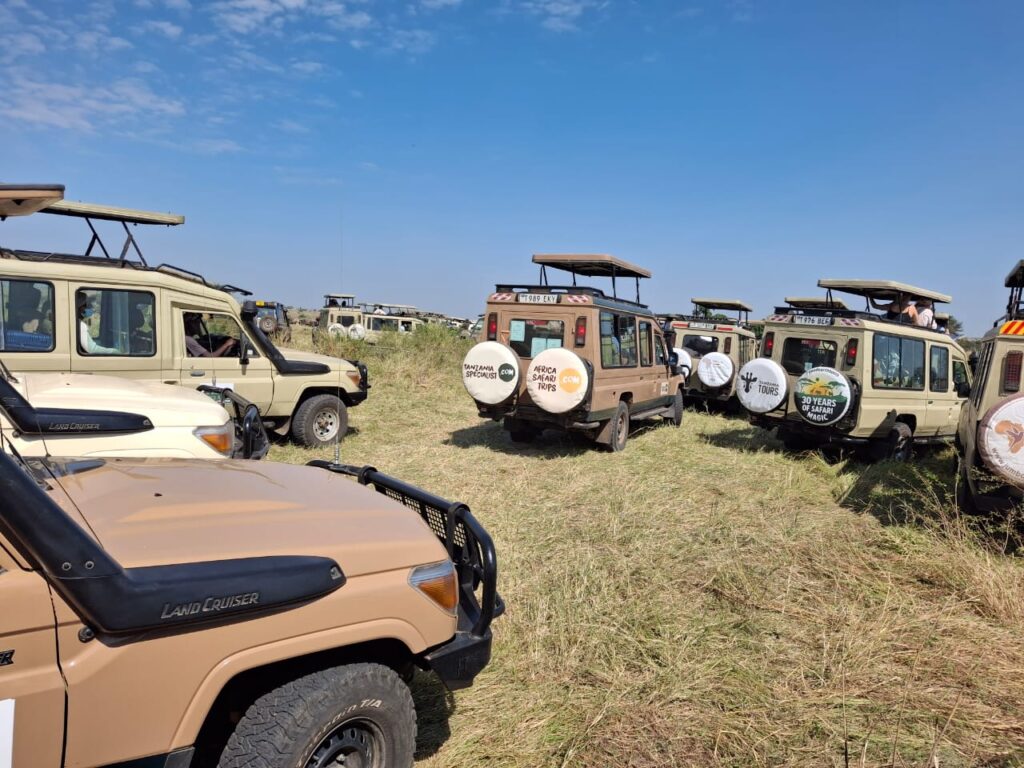
Being invited by ENVI Sisini Mara to carry out an introductory visit during the height of the wildebeest migration was truly special and valuable. It is not often that I am involved in training at camps during peak season, although we can—and do—adapt our timing to remain flexible around operations.
The viral videos of over tourism, too many vehicles, and insensitivity to the animals had just hit before I arrived. This gave me a chance to evaluate the situation and to try and understand the challenges that the guides were facing.
Now, I have been in the industry for quite some time, and although been in the Serengeti before as well as the Masaai Mara, I had never seen a crossing before. I had also never experienced the insane number of Safari vehicles waiting at Kogatende. Welcome to the cauldron BR.
Caught up in the frenzied chaos of thousands of Wildebeest ready to cross, driven by survival and ancient instincts, the noise, the dust, the drama, vehicles speeding to get a position, everyone just as frenetic as the wildebeest themselves. It’s raw. The duality of utter awe and vulnerability. Many wildebeest die in these crossings, and it should not be by humans, blocking points of entry, separating the herds, etc.
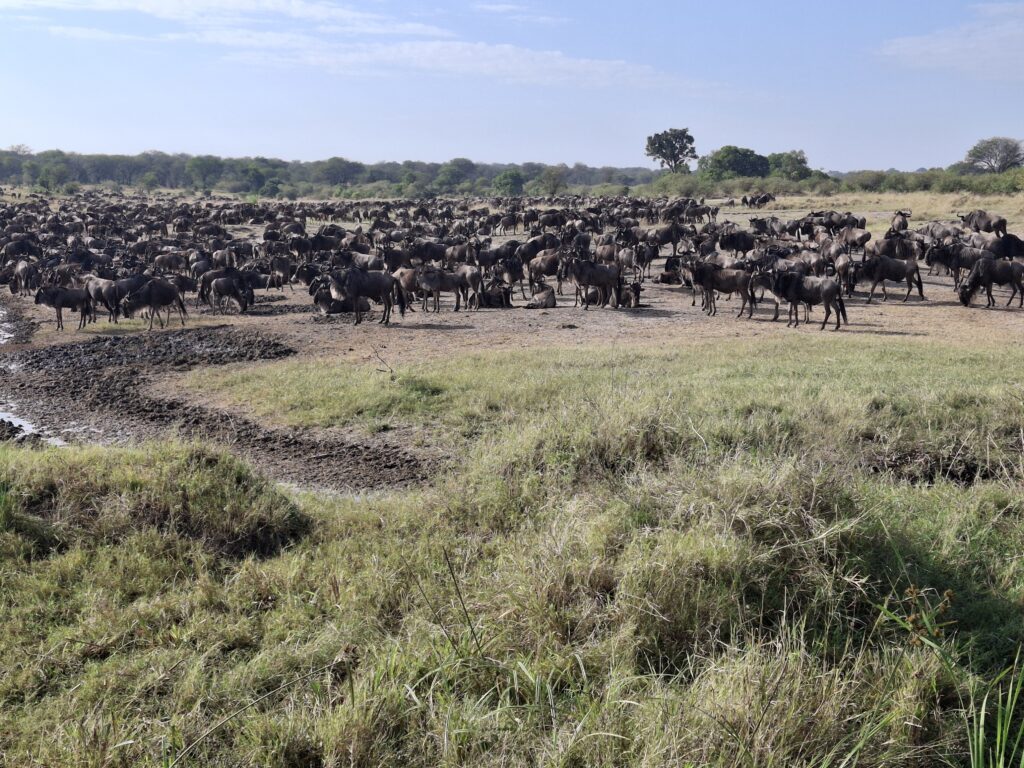
I have never seen a wildebeest swim before. We don’t get that in South Africa. And so to see a Wildebeest swim, in deep water, with crocs attacking, is truly incredible. To see thousands swimming, is a privilege to witness; it is a symbol of resilience and hope.
But at what cost?
Guides have a difficult time managing the situation. Hesitate and you lose a prime spot. Speed and swerve and cut the wildebeest off, then you lack sensitivity and become a nameless, numberless bunch along with every safari vehicle there.One shouldn’t point fingers at the symptoms when the cause is problematic. Too many camps and so the guides are left trying their best to hold up their side of things.
So How? First, we took a step back and asked why? Why are we here, why do you want to be a guide? And what can we do to keep this amazing natural phenomenon sustainable? Sustainable? Yes. I can see why guests want to be here. The scene is exciting, a one-of-a-kind exciting. It is often a spiritual event that evokes some ancestral connection and Wildebeest, driven by an instinct so primal, it’s hard not to be moved.
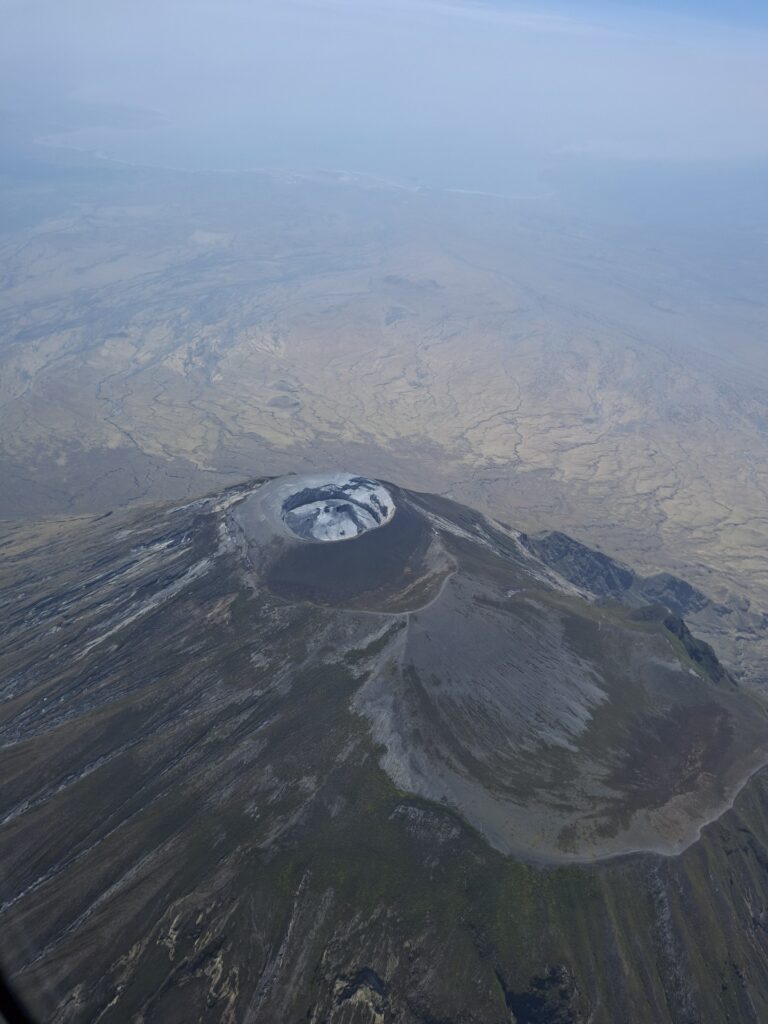
In context, the whole of Northern Tanzania is so unique. From Kilimanjaro in the East across Lake Manyara and the rift valley, Ngorongoro Crater past Ol Donyo Lengai (the most recent volcano in East Africa) to the Serengeti and on to Lake Victoria. The geographical landscape is mystical and antediluvian.
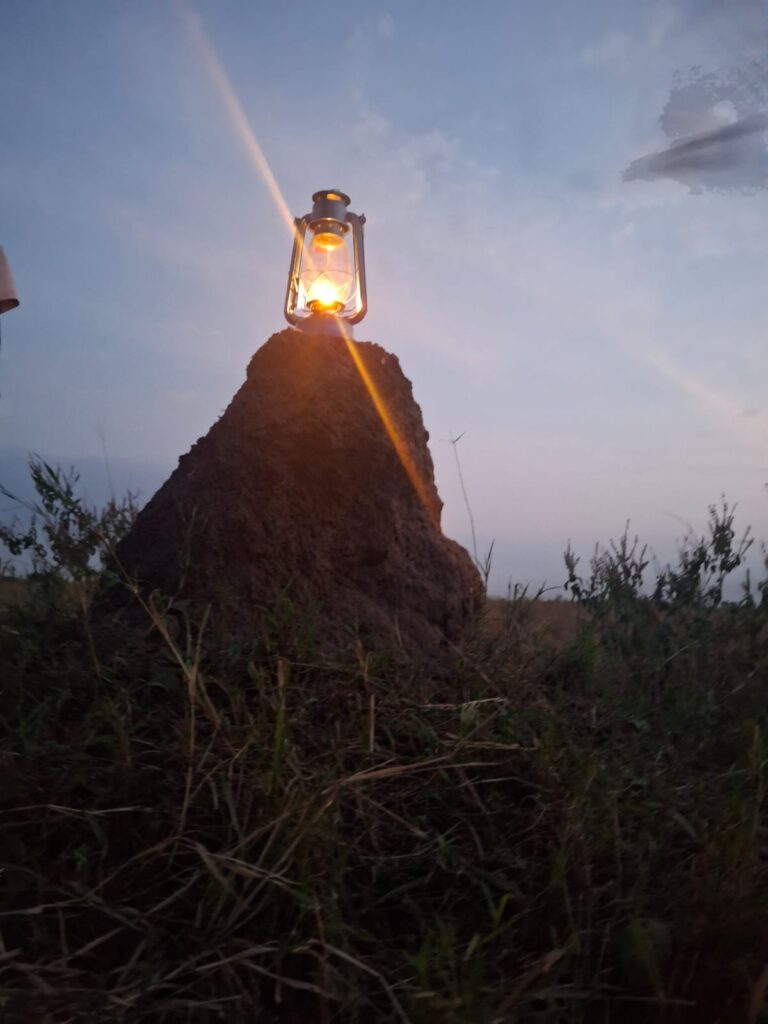
But if the trend continues, will nature find a different way? Will the Wildebeest crossings dry up as they switch to something different? Then the tourists will dry up along with the camps.
We need tourism, but we need tourists to come back for it to be sustainable. So the guides have to find a way among the chaos to slow things down. Give an experience that guests will remember for all the right reasons.
Have we lost the way?
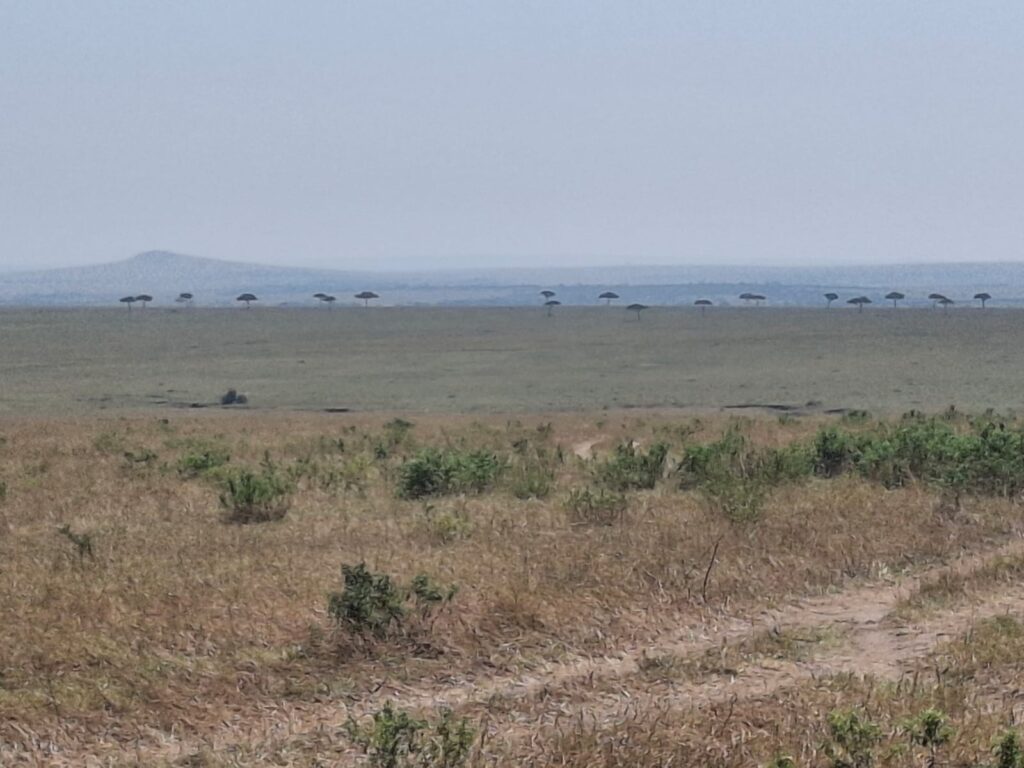
There are open places where you can take guests that are just as beautiful, if not more so, away from the maddening crowds.
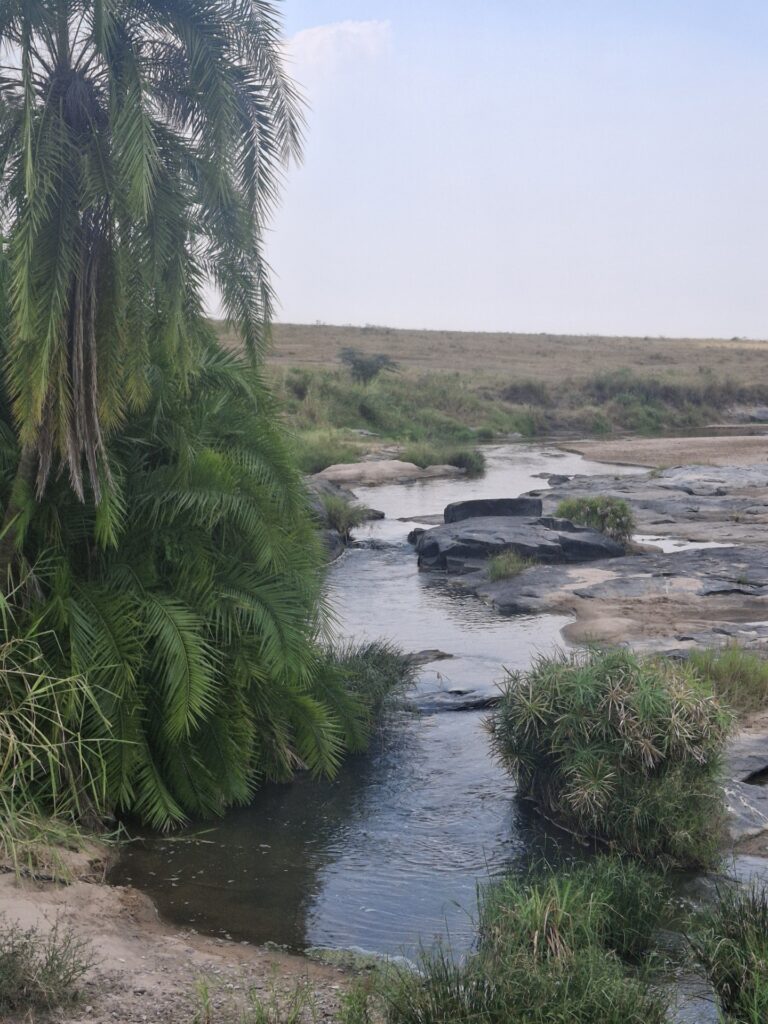
The main focus was to get the guides to think for themselves and about the standards they wish to set for themselves and the values they want to guide by. Not to worry about what the others are doing, but to lead by example, call the bad behavior out if necessary.
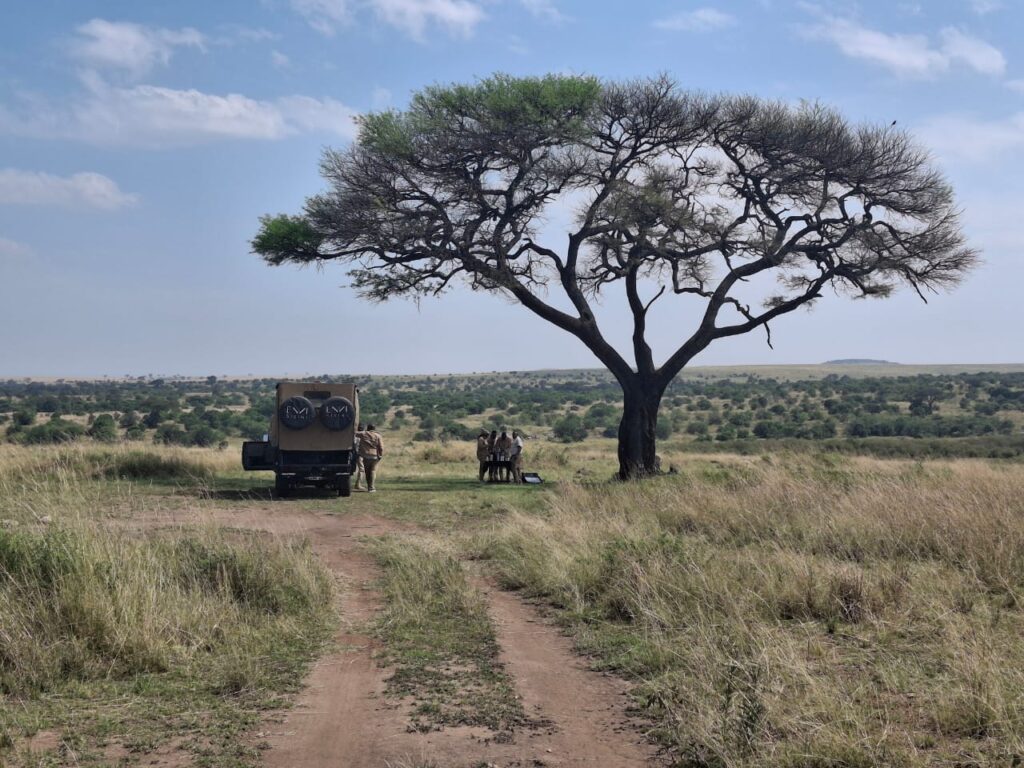
Responsibility and professionalism. The experience should never be at the expense of safety. Safety first, always. Of both guests and the animals.
Above all, the respect for the environment and the animals that guests are here to see, animals must have the right of way; we are just observers. This is not a zoo.
Phase 2 of the training will be targeted with this in mind. To grow each guide’s leadership, set team culture and values and help coach them to deal with and manage the challenges that come with guiding in this special place. How to be firm and assertive and keeping your head are all critical when there is a lot of pressure.
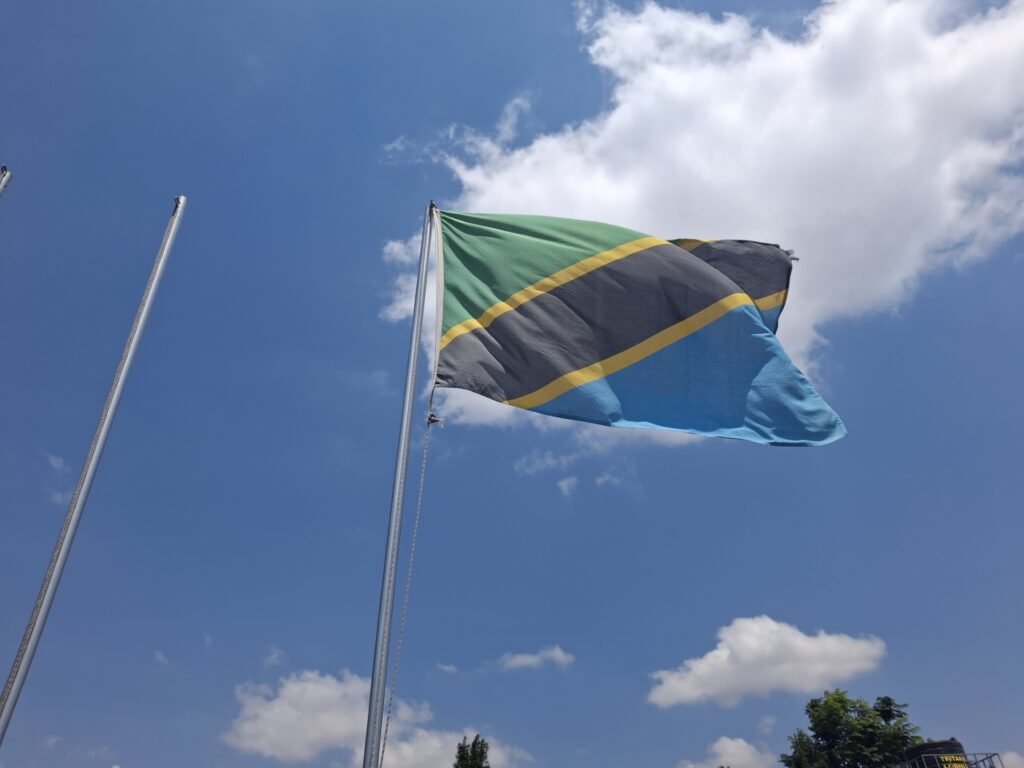
As I sit back at home reflecting on this trip to the Serengeti, I can still hear the frantic calling of the Wildebeest, feel the hoof beats, see the dust, and yes, also smell the diesel fumes and racing of the safari trucks.
As I get older, I prefer to take the path less travelled.
As my namesake, the poet Lord Byron said: “I love not man the less but nature more.”
So was the trip worth it? For sure, yes. Would I come here again? Without a doubt.
Am I excited about the challenge to work with the ENVI Sisini team to help them face these challenges? Absolutely.
Not even a 1000 wild wildebeest will drag me away.



